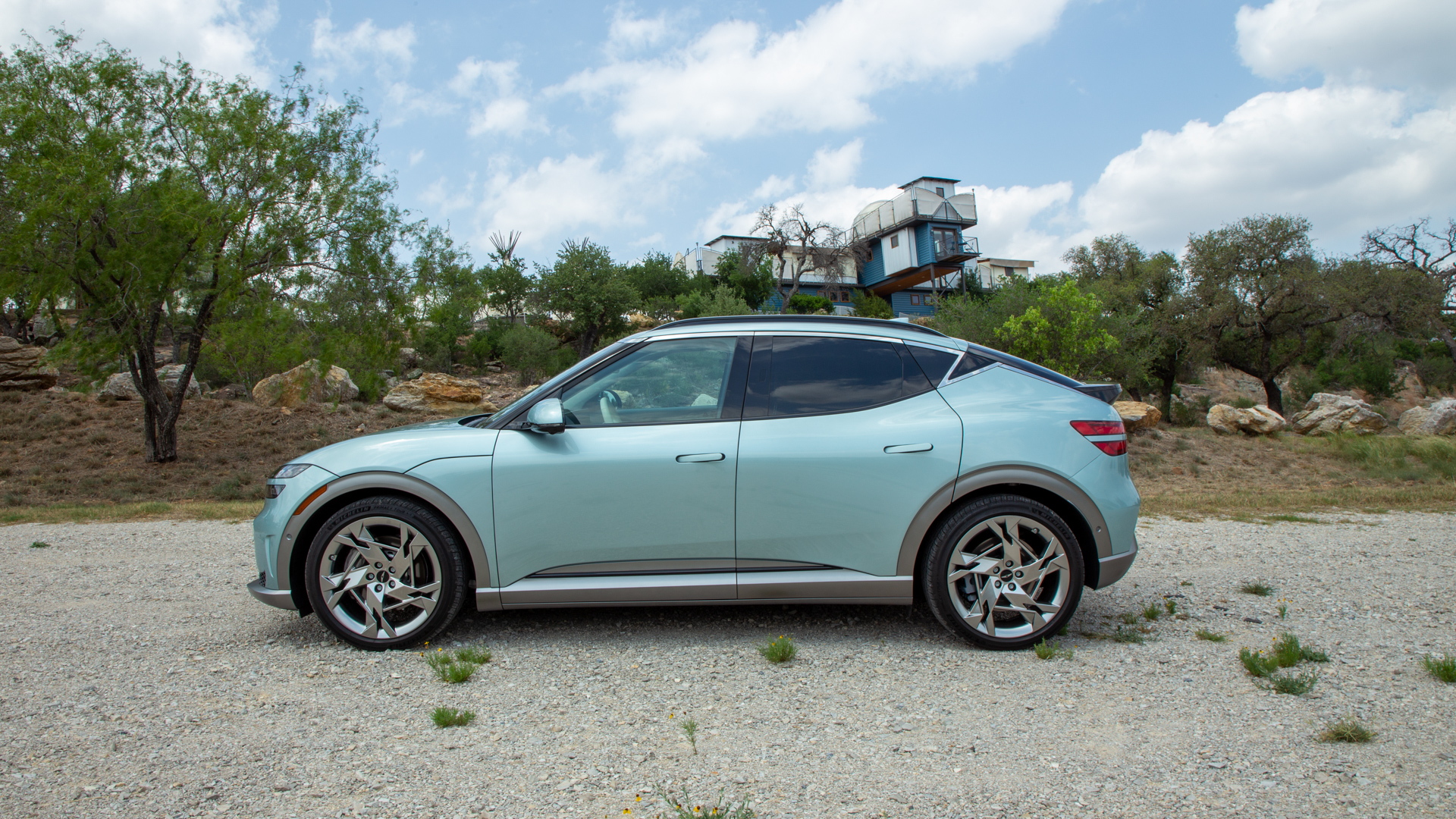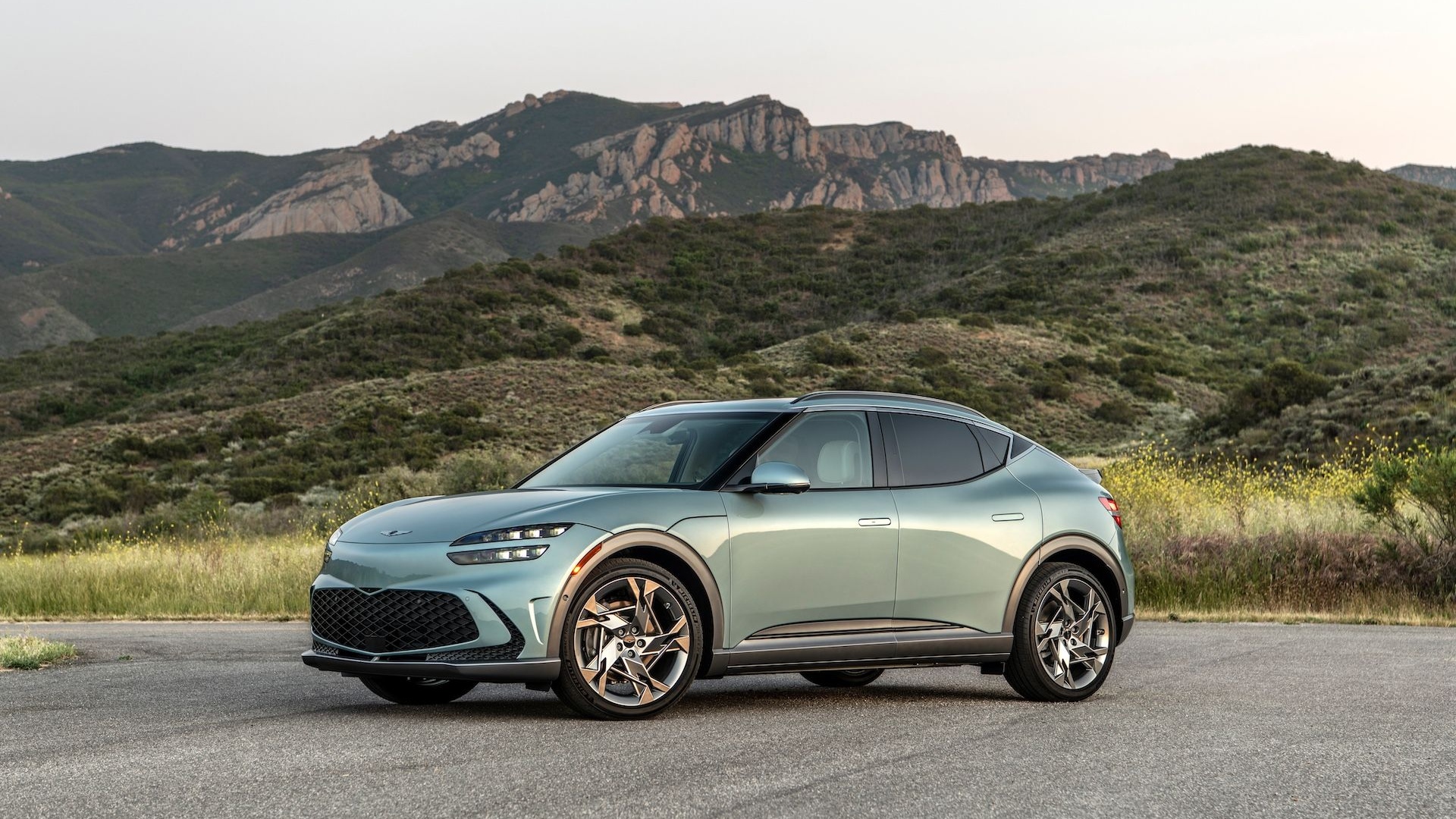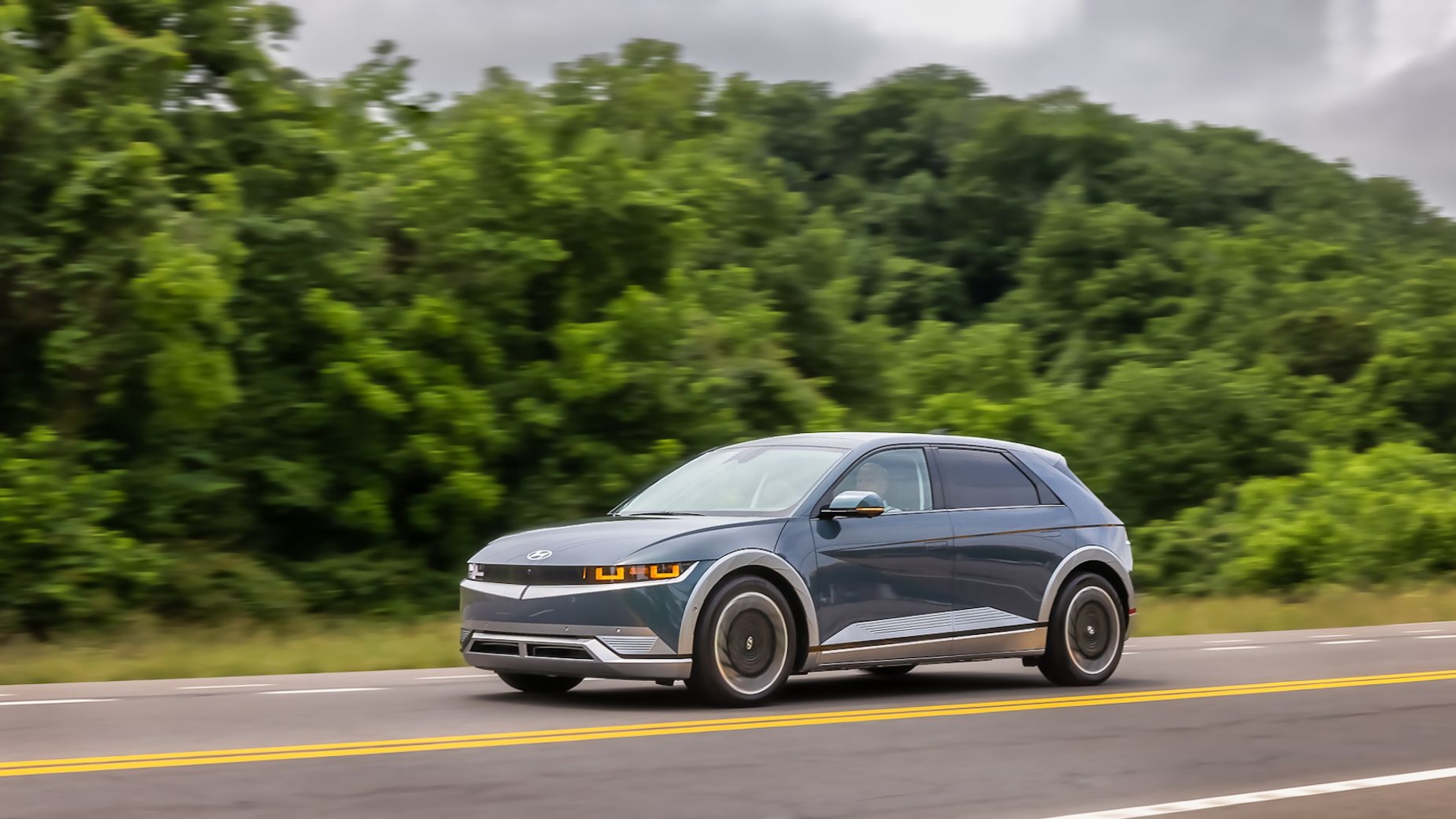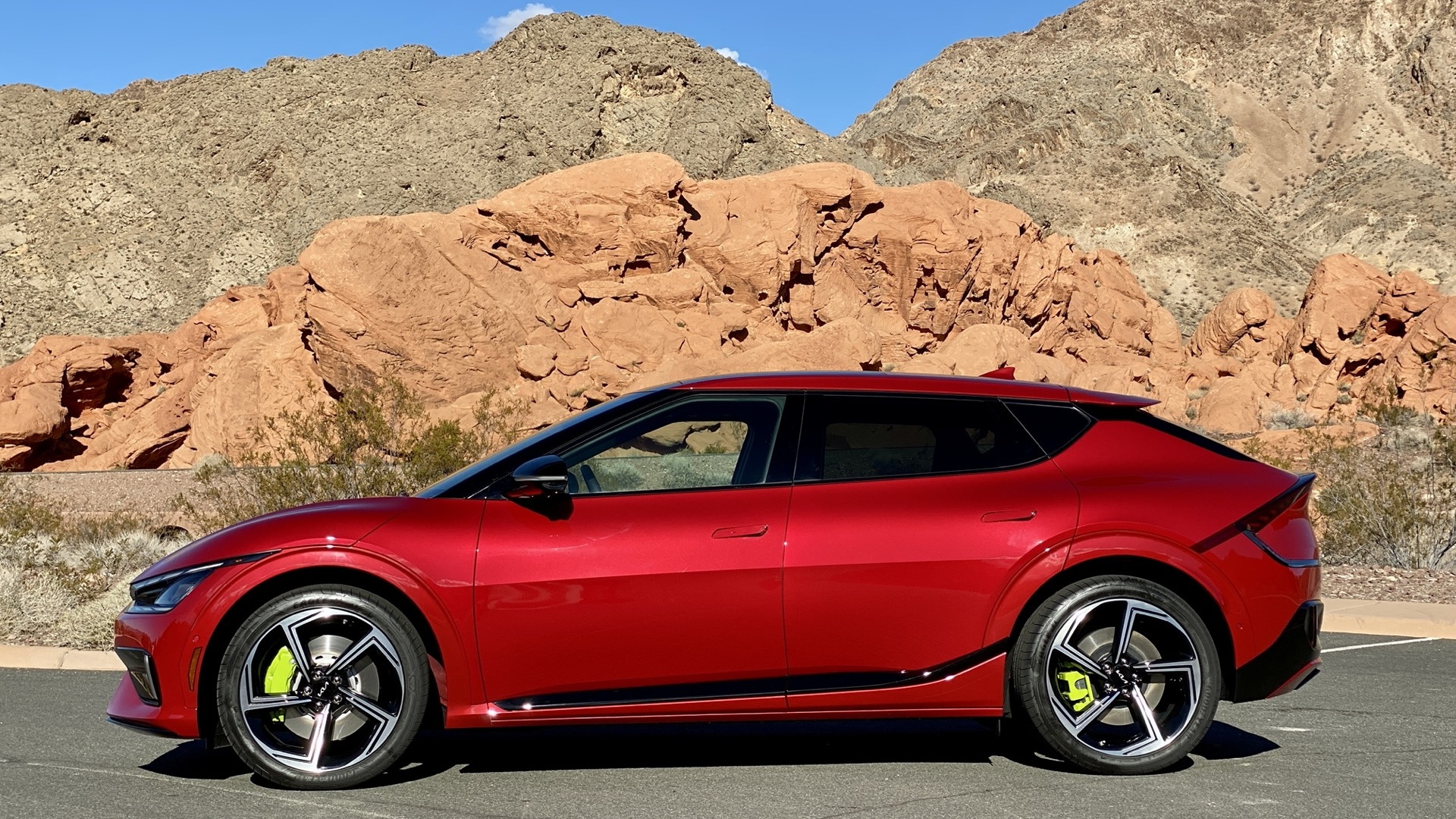The new 2023 Genesis GV60 represents the first EV for the Korean luxury automaker as it transitions towards an all-electric lineup by 2030. While the company’s gas-powered lineup has taken on new platforms that have given it some distance from its Hyundai counterparts, the new electric SUV heads back in the opposite direction and becomes the third vehicle we’ve tested that is built on the Hyundai E-GMP platform.
The first two are the Hyundai Ioniq 5 and Kia EV6, which debuted as 2022 models. The similarities surface in the new 2023 Genesis GV60 with side-by-side screens atop the dashboard, the tiny frunk storage space, and the surprisingly spacious interior dimensions.
But the GV60 adds a new level of luxury along with some new technology that Genesis hopes will give it some clear advantages over its less sophisticated (and more affordable) counterparts. I spent a day behind the wheel of the GV60 on a very hot, 96-degree day in Austin, Texas, to find out if those changes make it different enough.
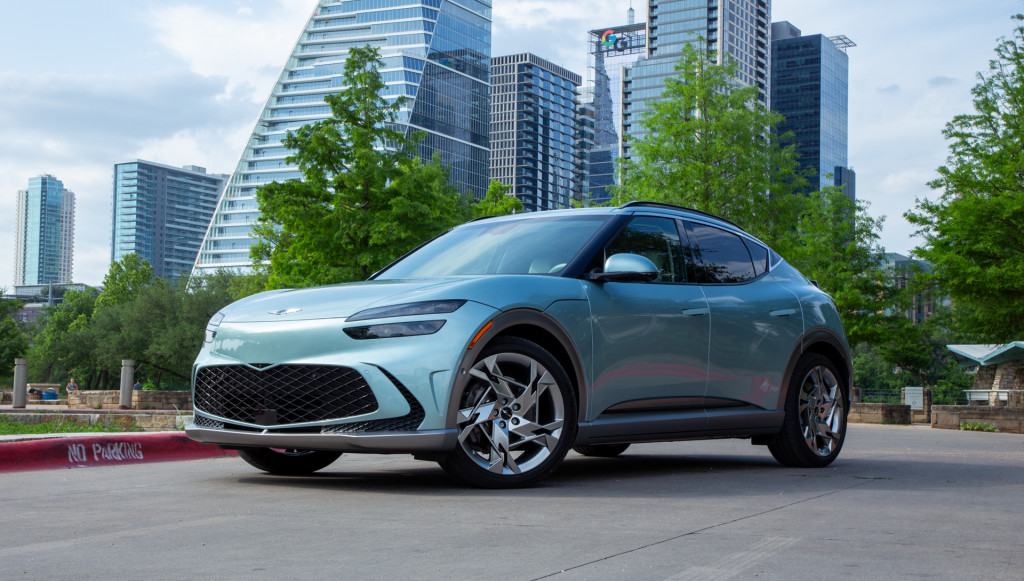
2023 Genesis GV60
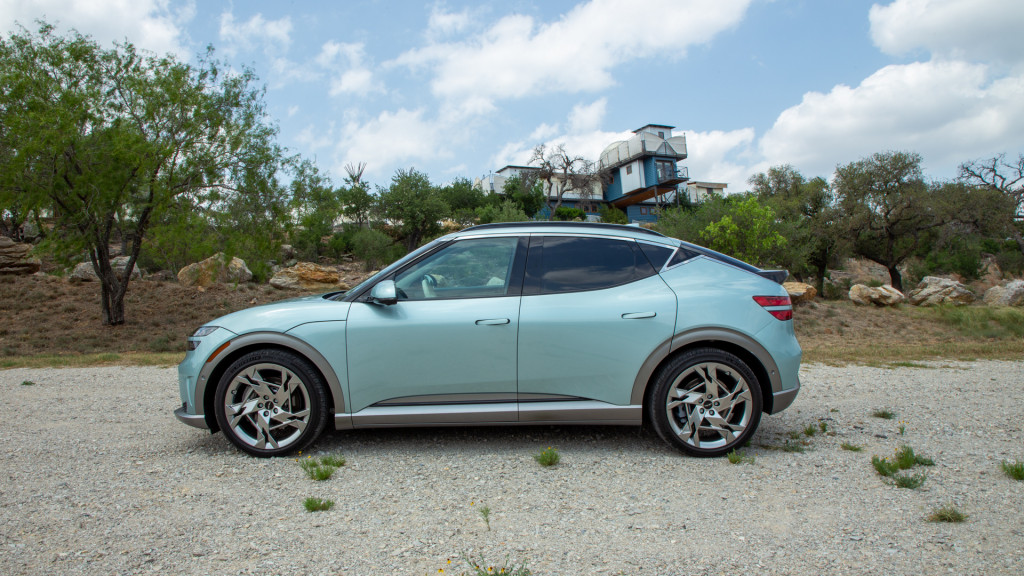
2023 Genesis GV60
The exterior stylings of the Ioniq 5 and EV6 have been widely praised and I think I prefer both of those vehicles to the GV60, from the outside at least. Viewed from both the front and rear three-quarters diagonals, the proportions and Genesis details like the two-piece stacked headlights and taillights give it some added class. But from the side the rear overhang looks awkwardly abbreviated, so that the rear spoiler appears to jut out further rearward than the back of the liftgate (though in practice it does not). This stubbiness is not an optical illusion, the GV60 is nearly 5 inches shorter than the Ioniq 5 and 7 inches shorter than the EV6.
What the GV60 does offer is a much brighter color range than its counterparts, from copper, to bright green, to a very pleasing light blue/teal called “Hanauma Mint.” The lower cladding stays the same on all the colors, but it’s not as prominent as the bodywork on the Ioniq 5 so it looks less offensive on lighter colors.

2023 Genesis GV60
Unlike its counterparts, there isn’t a rear-wheel drive version of the GV60. It’s offered in a pair of AWD trims, Advanced and Performance. Both models make the same amount of torque (446 lb-ft), but the Performance has a more powerful front motor that outputs 160 kw versus 74 kw on the Advanced, giving it an advantage of 429 hp to 314 hp. A 77.4-kwh battery pack is the only option, and it provides an estimated 248 miles of range in the Advanced and 235 miles in the Performance.
Our day of driving didn’t cover enough ground (around 140 miles) to necessitate a charging stop, but the GV60 does offer stellar quick charging times. Its 800-volt charging architecture means that it can accept 235 kw of power and quick charge from 10-80% in just 18 minutes, or add 64 miles in about five minutes at peak charging.
The Performance model I tested felt very quick. A stab of the pedal resulted in the instant torque jolt expected of an EV, and the GV60 pulls beyond highway speeds with ease. Mounted on the steering wheel are a pair of buttons for drive mode by the left thumb and “Boost” mode by the right thumb. To have the most fun, push the left button to activate Sport mode and then the right one to get the GV60 into its most powerful setting.

2023 Genesis GV60
It was previously announced that the GV60 would offer boost and drift driving modes, but I was only able to test the Boost mode safely without a controlled track environment. Boost mode is only offered in Performance models and lasts for 10 seconds, increasing output to 483 hp and 516 lb-ft of torque, which are gains of 54 hp and 70 lb-ft respectively. It also sharpens accelerator pedal inputs, so that even a tiny sliver of throttle results in a quick lurch forward and makes passing or getting onto the highway a fun adventure.
Genesis says that there’s a theoretical limit to the amount of times that you can activate this mode in a row as components get hotter. But on a very hot day I put it into Boost mode about six times in a row without the GV60 pulling a Roberto Duran and saying “no más,” so it seems to not put too much strain on the powertrain. The Boost button also does something smart. If you hit the button mid-corner while off the accelerator pedal, it won’t activate until you start to accelerate at exit so you get the full 10-second effect only after you get back on the pedal.

2023 Genesis GV60
The Performance versions of the GV60 also add the same electronically controlled suspension with road preview found on the GV70, along with a mechanical limited-slip differential. The second of those additions works flawlessly as the GV60 puts down its power with no real drama.
The suspension is not as well sorted, surprisingly, given that we enjoyed this setup so much in the GV70. On smooth roads, the GV60’s ride is impeccable but on the often broken pavement around Austin, the suspension struggled to isolate the cabin from seams and uneven surfaces. And it also seemed to have trouble controlling rebound in twisty corners. After getting off the brakes the nose would come back up too quickly and get unsettled, wobbling the front of the GV60 as you begin to accelerate and want stability the most.
It was a shocking development in a vehicle which to that point had driven like its counterparts—mostly without flaw. It’s worth noting that the GV60’s added equipment does drive its curb weight up to 4,890 pounds for the Performance model, which is over 200 pounds more than the Ioniq 5 and EV6. That could make some difference in the ride quality but neither of those vehicles offered a hint of this mild porpoising effect, so it probably comes down to the tuning of the adaptive suspension.

2023 Genesis GV60

2023 Genesis GV60

2023 Genesis GV60
Inside, the GV60 does a great job with materials and shapes (as it does in all of its other vehicles as well).It feels familiar to the Ioniq 5 though it’s clearly stepped up into the luxury space. The only exception is the all-black interior, which is too drab and doesn’t let the design details stand out enough. Go with the gray and white (shown here) or even better, the Torrent Navy Monotone, with blue upholstery and bright green accents. That might sound strange, but take a look for yourself before casting judgment. The illuminated orb that sits on the center console is also less gimmicky than it seems at first glance. It can be tricky sometimes to know if your EV is still on and this makes it simple: if you see the orb the vehicle is off, the drive selector knob means it’s on.
The GV60’s infotainment system doesn’t offer much over the Hyundai setup, besides flashier graphics. But the GV60 does have new technology that makes it more convenient, including facial recognition to unlock the vehicle and a fingerprint reader to start it. Tap the door handle and stand in front of a camera in the B-pillar and the GV60 will unlock (the same procedure also locks the vehicle). Once inside, put your chosen finger on the fingerprint reader and a small message in the instrument cluster indicates that the vehicle is ready to be started via the start button up on the dash.

2023 Genesis GV60

2023 Genesis GV60
Genesis says the GV60 can store two different profiles, so two people will have face unlocking and fingerprint starting privileges. After you use your face to unlock the vehicle, your personal profile is loaded and the seat, steering wheel, mirrors, head-up display, and infotainment settings are all adjusted. And it was a breeze to set up, to add my face and fingerprint to the existing pre-loaded profile took under 90 seconds. Then the Genesis representative snatched the keys from me and said “you won’t need these the rest of the day,” with confidence that proved to be prescient. The system uses an infrared camera so it works in different light conditions and at night.
The 2023 GV60 starts at $59,980 (including a $1,090 destination charge) for Advance models, which is $10,000 more than the Ioniq 5’s more affordable AWD trim and $9,000 more than the EV6’s. Performance models stretch up even further, starting at $68,980 and features nappa leather upholstery, a massaging driver’s seat, heated rear seats, and 21-inch alloy wheels. The Advance is very well equipped in its own right, with matching 12.3-inch screens for the instrument cluster and infotainment (the center screen is a touchscreen), Bang & Olufsen audio, wireless charging pad, four USB-C ports, and a slew of standard safety features.
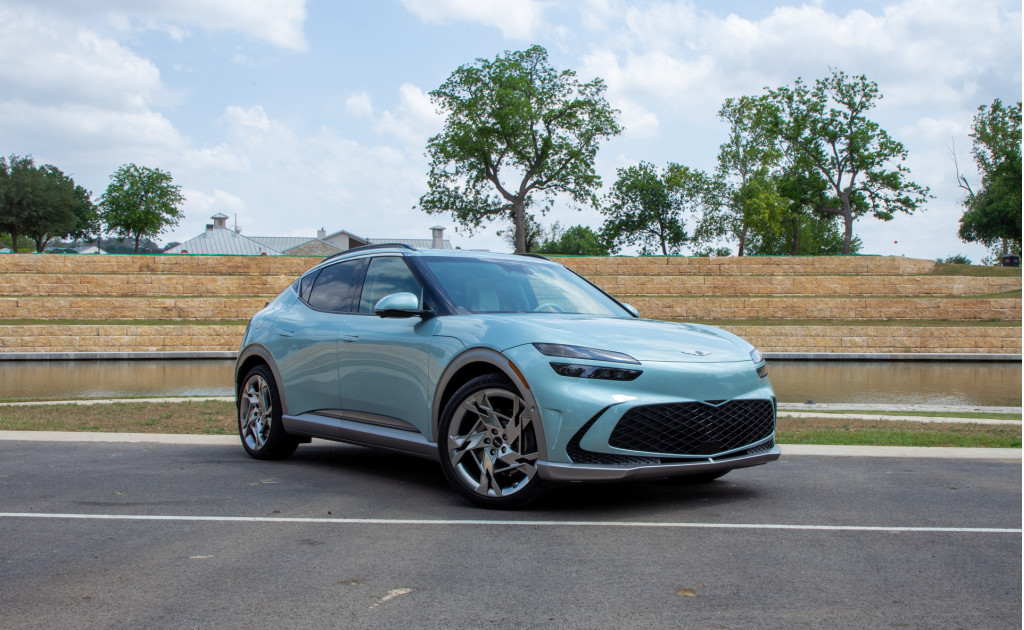
2023 Genesis GV60
Even though it’s undoubtedly more luxurious, an extra $15,000 for the GV60 Performance over the top trims of the Hyundai and Kia is hard to stomach. The GV60 has a different cool factor about it; hopping out of the vehicle and locking it with my face on a quick detour to Target to grab some sunscreen put a wide grin on my face. But it’s an expensive party trick. Since the Ioniq 5 and EV6 have AWD setups that match the Advance, I find the value proposition to be lacking a bit on the GV60, which is the first time I’ve said that about any Genesis.
The GV60 goes on sale on May 17, in California, Connecticut, New Jersey, and New York at select retailers with a goal of expanding availability later this year.
Genesis provided airfare and lodging for Motor Authority to bring you this firsthand drive report.
*Editor's note: This piece originally referred the GV60's drift mode as being removed, but Genesis confirmed that it is still offered and this piece has been updated to reflect that.




